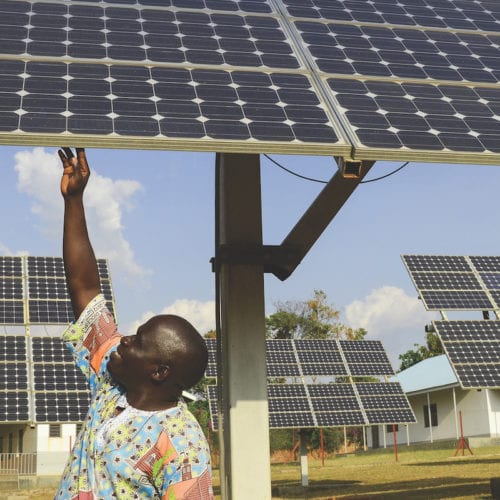
Bulletin from Madrid: Green Banks, Growing Ambition
Exhausted from spending a full week buzzing around COP25 and spending six hours waiting on the tarmac, I learned my flight back to the US from Madrid was canceled. Long after I was supposed to be home, I instead found myself having dinner with two other stranded passengers, also COP attendees. The week of negotiations, side events, meetings, late nights, and early mornings had left them questioning whether or not the annual conference gets the world any closer to addressing climate change. Their sentiment was that it’s time to shift from articulating the problem and living in an echo chamber of calls for higher ambition, to focus on specific solutions that reengineer the current system to allow countries to make significant strides. So when I started talking about RMI’s work on green banks and the need to rejigger climate finance toward national institutions that address barriers to climate investment, my dinner partners were refreshed. So much so, in fact, that one woman, a negotiator from a small island nation, told me she felt the flight was canceled for a reason—so that we would have the chance to meet.
The Dynamic Application of Green Banks
Her enthusiasm was a reflection of that demonstrated on Wednesday at “Country-Driven Climate Finance: Green Banks for Enhanced Ambition,” an event co-hosted by RMI as part of the efforts of the Green Bank Design Platform. Nine countries, from Portugal to Rwanda, showcased their progress and discussed their excitement at the potential the green bank model has to lead the market in technologies that will mitigate emissions and support resilience and adaptation. A green bank is a public or quasi-public institution specifically designed to lower risk and attract private investment to support domestic low-carbon infrastructure. Green banks allow countries to develop financial products and solutions that enable them to achieve their climate goals and finance technologies best suited to their particular circumstances.
In New Zealand, where 85 percent of energy is already renewable, the focus of their new green bank is on agriculture, transport, and the built environment. Meanwhile, for Mongolia’s Green Finance Corporation, which is in the design and capitalization process, the focus is on building energy efficiency to reduce emissions and mitigate air pollution, a top priority for the country. It’s a dynamic model, and all of the countries that participated in the event (Brazil, Cambodia, India, Mongolia, New Zealand, Peru, Portugal, South Africa, and Rwanda) highlighted how it can be uniquely molded to their country’s context.

The Growing Green Bank Movement
These 9 countries were just a sample of the 35 nations interested in creating financial institutions built to channel foreign and national climate investment. The green bank movement is growing, with more and more countries moving from interest in the model (the African Development Bank soon will announce six countries on the continent that will be exploring green banks), to getting ready to close their first deals (in the case of the Development Bank of Southern Africa and New Zealand Green Investment Finance). The event we organized at COP25—and other events hosted by the Green Bank Design Platform—are about showcasing these efforts and accelerating progress through the exchange of information and the development of a community of green bank practitioners.
The appeal of the COP is that it brings all countries together to work on one of the biggest challenges we face, and to make decisions based on consensus. But bespoke solutions often can’t be created at the international level; they need to be tailored to national goals and conditions. Green banks deliver this solution. And after a week of working toward coming to resolutions—and six hours on the tarmac—their story is still an inspiring one.


